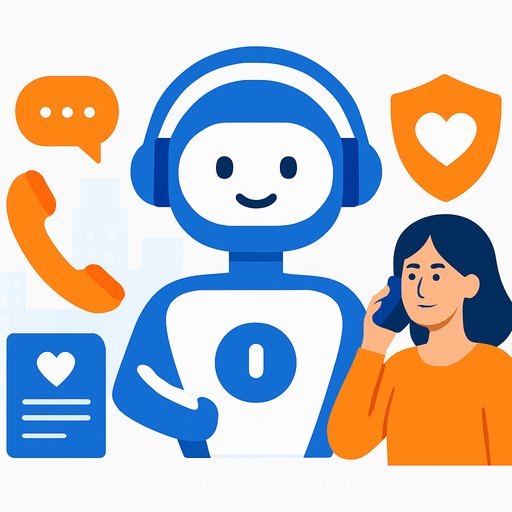After-sales is where loyalty is won (or lost)
Customer service can't be an afterthought anymore. If a customer has to wait, can't reach a human when automation fails, or gets bounced around because no one owns the outcome, they remember - and they leave.
"Many industries overlook the post-sales stage when they think about customer service," says Adrienne DeTray, CIO at Universal Technical Institute. "Once the deal is done, the relationship should not go quiet."
As one CEO put it: bring a customer into your family, don't lose them to neglect. If service is siloed from product, sales, and logistics, you get inconsistency, finger-pointing, and churn.
The FCR gap is biting
First contact resolution is what customers care about most. Yet average FCR sits at roughly 30% across B2B and B2C teams. That means most customers need multiple touches to get help - which drives repeat contacts, escalations, and higher costs.
For support leaders, FCR is the scoreboard. Improve context, compress handoffs, and you improve everything else: CSAT, handle time, and agent morale.
Make your data actually useful
You already have the data: products owned, usage patterns, prior tickets, promises made, and outcomes. The gap is turning it into context at the moment of need.
Use predictive analytics to flag risk early (churn signals, failed onboarding steps, adoption gaps) and reach out before issues escalate. Pair that with a living knowledge base that's accurate, findable, and written for action.
Practical moves that pay off
- Instrument context on the ticket. Auto-attach customer profile, entitlements, recent activity, known bugs, and prior resolutions.
- Standards for knowledge. Every article has an owner, a "last verified" date, decision trees, and copy-paste responses for agents.
- Outcome tags. Label every case with the true cause and the fix. Feed this back into product, docs, and training.
- Freshness SLAs. Set review cadences for top 100 articles and top 20 issues by volume.
Integrate for context and early warning
Teams that integrate data sources - CRM, product telemetry, billing, logistics, community, and support - can spot issues before the ticket arrives. Proactive outreach beats reactive firefighting.
Automated ticketing helps too: group similar issues, prioritize by severity and sentiment, and route to the right team immediately. At Avantra, support reps get highly relevant prior incidents and solution docs surfaced to them using a retrieval-augmented generation setup - which shortens back-and-forth and improves first responses.
If you're new to it, see a straightforward overview of RAG here: AWS: What is RAG?
A simple architecture you can ship this quarter
- Data spine. Connect CRM + ticketing + product telemetry + billing to a customer profile service.
- Context service. On ticket creation, attach profile, usage, known issues, and similar cases via a RAG index.
- Priority engine. Score tickets with sentiment, account tier, SLA, and impact; route intelligently.
- Proactive alerts. Trigger outreach on failure patterns, adoption drop-offs, and missed onboarding steps.
- Privacy & audit. Log what data was used, by whom, and for what decision.
Use agentic AI - with guardrails
Agentic AI goes beyond replies. It plans and completes tasks: cancel a subscription, reship an order, schedule a field visit, or compare shipping rates and submit the best option - without making the customer do the legwork.
It also triages faster: analyze bursts of negative sentiment, spot urgent issues, and move them to the front. Chatbots can handle simple flows and free humans to work the edge cases.
One caution: roll it out deliberately. Map where autonomy is safe, define approvals, and make failure paths graceful. Keep humans close to complex or sensitive scenarios.
Where agentic AI helps right now
- Form-filling and policy-bound refunds or credits.
- Appointment scheduling, rescheduling, and notifications.
- Subscription changes: pause, downgrade, cancellation with confirmations.
- Warranty lookups and straightforward reshipments.
- Knowledge upkeep: propose article updates after resolved tickets.
Staffing is the leverage - don't bet on "agentless"
Only a small share of customers fully resolve issues without a human. Many companies aiming to cut big chunks of their service workforce are walking those plans back. The model that works: digital first, not digital only.
Use AI to boost people - not replace them. Keep coverage wide, train continuously, and give your team better context and tools. That's how you protect FCR and CSAT while lowering effort.
Build a modern support playbook
- Skills matrix and pods. Group by product depth and customer segment; enable swarming for tough cases.
- Copilot training. Teach prompt patterns, verification habits, and when to hand off to humans or escalate.
- Quality loop. Calibrate weekly on 10-15 calls/chats per agent; coach on clarity, empathy, and resolution framing.
- Coverage model. Extend hours where demand peaks; use backlog heatmaps to staff smartly.
Metrics that actually move behavior
- First Contact Resolution (FCR). Primary north star; segment by channel and issue type.
- Time to first meaningful response. Not just "we got your ticket," but a contextual next step.
- Reopen rate and bounce rate. Reopened tickets and transfers are FCR killers.
- Containment with a CSAT floor. Track bot containment only if CSAT stays above your threshold.
- Knowledge freshness index. Percent of high-volume articles verified in the last 30 days.
- Proactive saves. Outreach that prevented a ticket or a churn event.
Your 90-day plan
- Weeks 1-2: Baseline FCR, reopen rate, and top contact drivers. Pick two high-volume issues to fix end-to-end.
- Weeks 3-4: Clean and standardize the top 50 knowledge articles. Add owners and review dates.
- Weeks 5-6: Ship a RAG-powered "similar cases + solutions" panel in your agent console.
- Weeks 7-8: Add sentiment-based prioritization and smarter routing.
- Weeks 9-10: Launch one agentic flow (e.g., subscription cancel/modify) with approvals and audit logs.
- Weeks 11-12: Train agents on new workflows; set up weekly calibration and a feedback loop to product.
Level up your team
If you're formalizing AI skills across support, these resources can help your frontline ship real improvements fast:
- AI courses by job role - find programs specific to support and success workflows.
- AI certification for ChatGPT - practical prompts, guardrails, and verification techniques for daily casework.
The takeaway is simple: connect your data, give agents real context, automate the boring parts with guardrails, and keep your team strong. Do that, and FCR climbs, effort drops, and customers stick around.
Your membership also unlocks:






